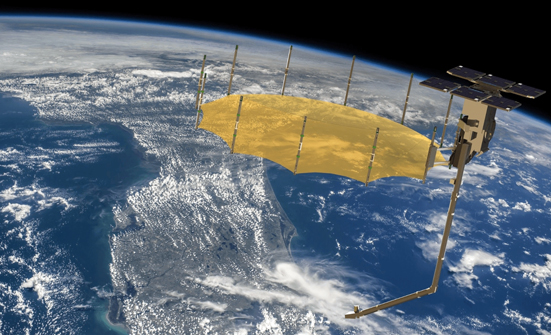Capella uses AWS to analyse data from space
- July 8, 2020
- Steve Rogerson

Capella Space, a provider of on-demand Earth observation data via satellite-based radar, is running its entire IT infrastructure on Amazon Web Services (AWS) to automate and scale its operations, including satellite command and control.
This is using the AWS Ground Station service to control satellites and download satellite data directly onto AWS using a managed network of ground station antennas in AWS regions around the world.
Using AWS, California-based Capella provides its customers with access to satellite data within minutes of its capture –faster than traditional satellite data delivery services, which can take up to 24 hours – and at a lower cost. In addition, Capella leverages AWS services to process satellite data in real time as they are received, helping its users in agriculture, infrastructure, defence and disaster response immediately analyse and extract value from their data.
By leveraging and communicating directly with AWS Ground Station antennas, Capella’s Earth observation system can provide organisations with timely access to images of the Earth, while freeing them from the cost and complexity of managing their own ground station infrastructure, which includes ground antennas to communicate with the satellites, as well as servers, storage and networking infrastructure to process, store and transport the satellite data.
The synthetic aperture radar (SAR) satellites see through clouds and darkness to collect high-resolution imagery around the clock in all weather conditions.
The company uses AWS to manage the enormous amount of raw data that this persistent monitoring generate – an average of two to five terabytes per satellite per day – which Capella must prepare for analysis before they can be used by its customers.
Capella leverages AWS compute, storage, database, machine learning and analytics services to process these data immediately upon downlink, helping its customers quickly gain insights for dynamic applications such as detecting illegal maritime activities and assessing the impact of natural disasters. In addition, Capella is developing a searchable archive of Earth observation data in the cloud, providing benchmark data so users can track subtle changes to the environment, discerning patterns over time to help them inform business and policy decisions.
“Our customers rely on us to deliver precision satellite imagery quickly,” said Payam Banazadeh, CEO of Capella Space. “Working with AWS and leveraging the global coverage provided by AWS Ground Station, we are redefining what is possible in the satellite industry and reducing the cost and time required for organisations to benefit from satellite data.”
He said combining Capella’s automated and real-time approach to collecting Earth observation data with AWS’s infrastructure and portfolio of services helped its customers achieve timely insights that could save lives and protect the health of the planet.
“We look forward to continuing to grow and innovate on AWS to create new opportunities for our customers who depend upon space technologies,” he said.
Capella provides on-demand sub-0.5m high-resolution SAR Earth observation imagery. Through a constellation of small satellites, it is providing access to frequent, timely and flexible information affecting dozens of industries worldwide.
“Capella Space leverages the breadth and depth of AWS services to provide its customers with on-demand access to data from space, as well as analytics to help them address some of the biggest challenges on Earth,” said Teresa Carlson, vice president at AWS. “Using AWS Ground Station, customers like Capella can connect the power of satellites with AWS’s reliable, global infrastructure and unmatched portfolio of services to automate and scale their operations on demand. By removing the need for organisations to build and maintain their own ground stations, AWS is putting the power of satellite data into the hands of more customers in order to derive insights that potentially can improve our understanding of space and life on Earth.”





